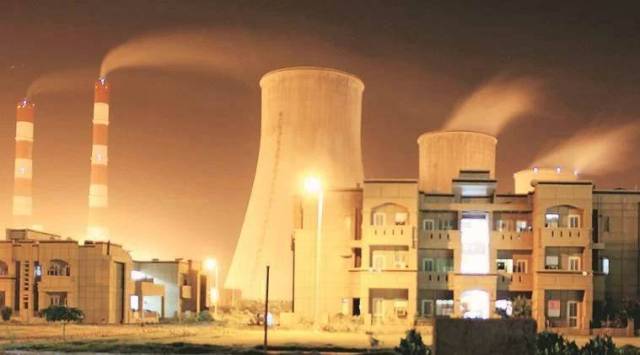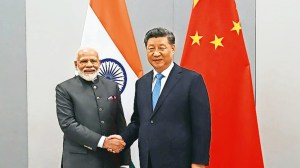Stay updated with the latest - Click here to follow us on Instagram
CEA’s advise against retiring thermal power plants will hit renewable energy projects: Experts
Sunil Dahiya, analyst, Centre for Research on Energy and Clean Air, said the advice by CEA is “divergent from its own assessments and numbers’’.
 The power minister, in a meeting, “advised not to retire any thermal units considering the expected demand scenario and availability of capacity in future.” (File)
The power minister, in a meeting, “advised not to retire any thermal units considering the expected demand scenario and availability of capacity in future.” (File) Despite India’s push for renewable energies, a recent notice issued by the Central Electricity Authority of India (CEA) to power utilities to not retire any thermal units until 2030 has alarmed experts who say the move will have a retrograde effect on the country’s energy transition endeavours.
In its notice on January 20, the CEA said “the country is witnessing huge energy demand post pandemic which is projected to surge at all-time high in coming summer of 2023 and beyond.”
“Therefore the role of thermal fleets including old thermal units becomes crucial in order to support renewable integration,’’ it said, adding that the power minister, in a meeting held on December 6, “advised not to retire any thermal units considering the expected demand scenario and availability of capacity in future.”
The CEA has further said that about 15-16 GW of new thermal capacity is expected by December 2023. “Therefore it is advised to all power utilities not to retire any thermal units till 2030 and ensure the availability of units after carrying out R&M (renovation and maintenance) activities if
required,’’ it said.
“India’s coal fleet has been running at less than 60% PLF (plant load factor) from April to December in FY2023 thus far, despite increased demand post-pandemic. Retrofitting and modernizing plants that should be retired in the next few years will only drive-up system costs, at a time when lowering the cost of electricity should be the priority for the economy. Having excess coal capacity with high fixed costs is slowing the uptake of cheaper renewable energy, undermining India’s global competitiveness,” said Ashish Fernandes, CEO, Climate Risk Horizons.
“India has already failed to meet its 175 GW RE (renewable energy) goal by 2022 – if this continues the country will also miss the challenging 450GW by 2030 goal. A phased replacement of older, less efficient and more expensive coal with renewables and storage is essential, and unfortunately such generic advice that does not allow for different conditions in different states will just confuse discoms about the path ahead,’’ he added.
Fernandes pointed out that India currently has surplus installed capacity, and therefore a shortage of power supply should not be taking place.
Vibhuti Garg, director (South Asia) of the Institute for Energy Economics and Financial Analysis, said, “India continuing with an old inefficient fleet and looking to extend their life beyond their useful life is in conflict with their overall energy transition goal. Coal plants in India are already running at low PLFs and further extending the life of such plants will only lead to lower PLFs of new and more efficient coal fleets. Discoms will not sign PPAs (power purchase agreements) with new renewable energy plants as they will continue to meet their demand from such inefficient coal plants. Various studies have established savings to discoms from retiring their coal feet and meeting their energy demand from cheaper renewable energy. Such measures are counterproductive and will conflict with India achieving 500 GW of non-fossil fuel power by 2030.”
Sunil Dahiya, analyst, Centre for Research on Energy and Clean Air, said the advice by CEA is “divergent from its own assessments and numbers’’.
“If they keep allowing the new power plants to be built and don’t retire the old power stations, we will continue to create stranded investments and assets as we have done over the past decade. It is
okay if the old power stations are allowed to operate for a few more years but then two things must be ensured. Firstly, all these old power stations should adhere to stringent emission standard norms to reduce pollutant emissions at source and, secondly, no new power station should be allowed to be built as the future growth in demand can be fulfilled by increasing the power load factor of existing stations and integration of renewable energy as planned for 2030,’’ he added.







